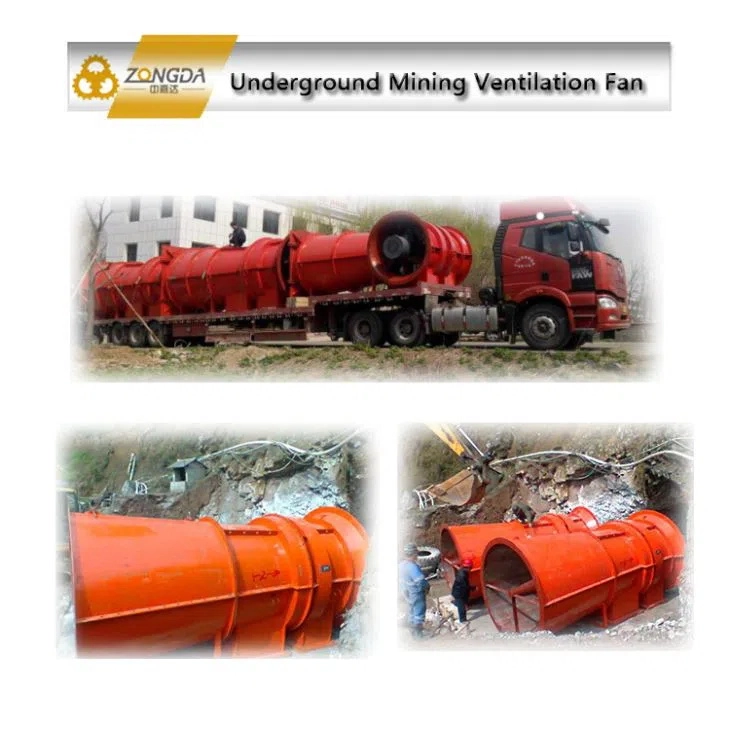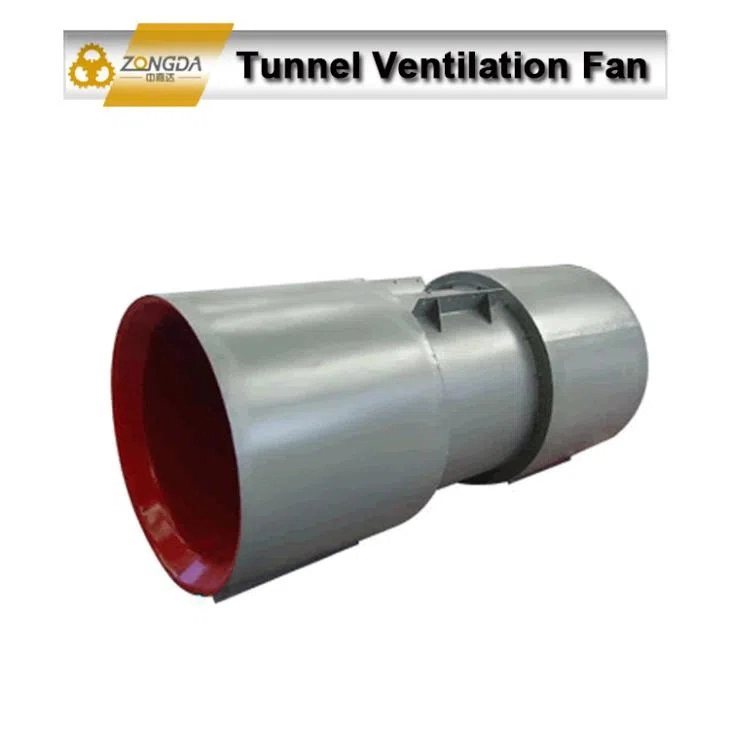All You Need to Know About Underground Mining Tunnel Ventilation
Why Ventilation Keeps Miners Safe
Ventilation in underground mining tunnels is a big deal for keeping things safe. Without enough airflow, miners face nasty gases like methane or carbon monoxide. These can pile up, mess with health, or even spark explosions. No way you want that in spots with flammable stuff like gas or coal dust! Good ventilation clears out those dangers and keeps the air fresh. Plus, it keeps tunnels comfy, holding temps between -5°C and 40°C. That’s key for miners to stay cool and safe. Gotta keep the air moving, right?
 How Ventilation Boosts Air Quality
How Ventilation Boosts Air Quality
Air quality’s a huge worry in mines. Dust, toxic fumes from machines, and natural gases make the air gross. That can lead to breathing problems for workers. Ventilation systems fix this by pumping in fresh air and kicking out the bad stuff. This swap keeps harmful bits low and meets safety rules like GB 16423. Clean air means healthier miners and smoother work. Who doesn’t want that?
Ventilation’s Impact on Getting Stuff Done
Good ventilation makes mining run like a dream. With clean, cool air, workers can focus without choking on dust or sweating buckets. It cuts down on breaks caused by bad air or hot tunnels. Also, it saves gear from overheating or getting clogged with dust, so you spend less on fixes. More work done, less hassle—that’s the vibe!
 Core Ideas for Designing Mine Ventilation
Core Ideas for Designing Mine Ventilation
Getting Airflow Right in Tunnels
Airflow’s the heart of a solid ventilation setup. You gotta plan how air moves so fresh stuff hits every corner of the tunnel while dirty air gets booted out. Things like tunnel shape, length, and size mess with airflow patterns. Designing it right keeps the air flowing smooth. Ever think about how air dances through a mine?
Why Pressure Control Matters
Pressure’s a sneaky but big part of ventilation. You need a balance between high and low pressure spots to stop dirty air from sneaking back into clean zones. That’s super important to keep gases or dust from spreading. Get it wrong, and you’re asking for trouble. Gotta keep the pressure in check, yeah?
Spreading Air Evenly for Top Results
Even airflow’s a must for a ventilation system that rocks. If air’s spotty, you get dead zones where junk like dust or gas builds up. That’s bad for workers and machines. Smart ducts, fans, and regulators spread air nice and even across the tunnel. Balanced air, happy mine—simple as that.
Key Pieces of Mine Ventilation Systems
Main Ventilation Systems and What They Do
Primary ventilation systems are the heavy hitters. They pull in huge amounts of fresh air from the surface and send it all through the mine. Big fans, like the K series Underground Mining Ventilation Fan, do the job with slick aerodynamics, matching the mine’s needs and saving energy. These are the backbone of keeping air fresh.
Auxiliary Systems: Where They Shine
Auxiliary ventilation systems are like the sidekicks. They focus air on specific spots, like work zones or fresh-dug areas. Smaller fans or ducts push clean air right where it’s needed most. Every part of the tunnel stays ventilated with these helpers. Pretty handy, huh?
Fans, Ducts, and Regulators in Action
Fans, ducts, and regulators are the dream team for ventilation. Fans, like the high-efficiency JK series mining local fans, create the airflow for main and side systems. They’re great for stuff like roadway digging. Ducts guide that air through the tunnel maze, while regulators tweak its path and amount to keep things balanced. It’s all about teamwork!
What Shapes Ventilation System Design
Rocks, Weather, and Other Environmental Stuff
The ground and weather around a mine mess with ventilation big time. Tunnels need to stay between -5°C and 40°C, with humidity at 25°C maxing out at 85%. That decides what gear you need to keep air flowing and temps right. High-up mines, over 1000 meters, need power tweaks ‘cause thin air makes fans work harder. Rock types matter too—porous ones let air sneak through, but dense ones need beefy systems. Oh, and water buildup can clog vents, so drainage’s gotta be on point.
How Deep Mines Change the Game
Deeper mines are trickier to ventilate. Heat builds up from the earth’s core, so you need cooling to keep workers comfy. Plus, gases like methane get thicker the deeper you go, so you need tough systems to clear ‘em out. Road slopes, kept at ≤ 14°, also affect how air moves. Deep mines mean big challenges, but good ventilation’s got it covered.
Handling Heat, Wetness, and Gases
Heat, humidity, and gases are no joke in mines. Too much heat tanks worker energy and wears out gear. Ventilation keeps temps in that -5°C to 40°C sweet spot. High humidity rusts machines and makes air feel icky, so dehumidifiers might join the party. Gases like methane or carbon monoxide are dangerous—ventilation systems, with fans like the K series, zap ‘em out fast while saving juice. Safety first, always!
Cool Tech for Better Ventilation
Automation and Smart Controls Rock
Automation’s changing the ventilation game. Smart controls watch air stuff like temp, humidity, or gas levels in real-time. If a spot’s got bad air, sensors catch it, and the system cranks up fans or shifts air to fix it. It’s like the mine’s got a brain! This saves energy and keeps miners safer. Who wouldn’t want that tech?
Using Computational Fluid Dynamics (CFD) to Nail It
Computational Fluid Dynamics (CFD) is like a superpower for ventilation design. It lets engineers play with virtual tunnel models to spot weak airflow or jams before building anything. You can tweak fan spots or ducts for max performance. CFD also predicts where wear might hit, so you fix it early. It’s a game-changer for keeping things smooth.
Energy-Saving Tech for Greener Mines
Going green’s big in mining now. Energy-efficient tech cuts costs and helps the planet. Fans like the JK series mining local fans run smooth with low noise and save power. They’re perfect for digging roads or moving air in stopes. Some mines even use solar or wind power to run vents, making things super sustainable. Save cash, save the earth—win-win!
FAQs
- What shapes underground mining tunnel ventilation design?
Stuff like rocks, temps (-5°C to 40°C), humidity (max 85%), mine depth, gas leaks, and slopes (≤ 14°) call the shots. - How’s automation make ventilation better?
It tracks air quality with smart sensors, tweaking fans or airflow on the fly to save energy and boost safety. - What’s CFD do for ventilation?
It maps airflow in virtual tunnels to find weak spots, letting you tweak designs for top-notch performance. - Why care about energy efficiency in vents?
It slashes costs and cuts down on eco-harm while keeping air flowing strong.
For custom ventilation gear, hit up QINGDAO ZONGDA MACHINERY CO., LTD today!


 How Ventilation Boosts Air Quality
How Ventilation Boosts Air Quality Core Ideas for Designing
Core Ideas for Designing 

